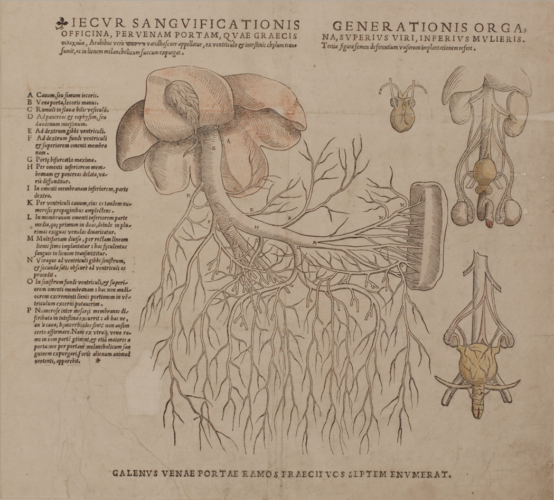According to the Bible, God created Adam in his own image, and created Eve out of Adam’s rib. This tendency to see woman as anatomically inferior to (and derived from) man also chimed with the Galenic ‘one sex’ model, which remained influential in the Renaissance. According to this theory, the female genitalia were an internal version of the male external genitalia, as these drawings (labelled ‘Generationis organa’, or ‘reproductive organs’, on the left) from one of Vesalius’ works illustrate. Vesalius’ label tells us that the upper (or ‘superius’) diagram is the male system, and the lower (or ‘inferius’) is the female. Although the words he uses primarily describe their respective locations on the page, a gender hierarchy is also at work here.
These technical theories could also be reflected in folk-knowledge. The French essayist Michel de Montaigne relates an anecdote about Marie Germain, who was born a woman, but at the age of twenty-two jumped over a fence. The exertion required to make this jump forced the genitalia from inside to outside, and he became a man.











